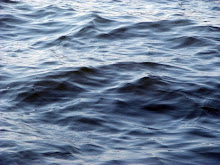
Penygadair, attribution unknown.

Barmouth and Cadair Idris
© Hugh Chevallier
Barmouth Harbour: 52° 48.3’N, 4°44.4’N Whoever spends a night on Cader Idris will wake up either a madman or a poet – or so it’s said. Given what’s known of modern Welsh poets, how does anyone tell the difference?
Legends swathe “the Cader” (which means “the seat”) as densely as the fog that often obscures Pen Y Gadair, its 893-metre peak. Depending on whom you ask, the southernmost mountain of North Wales’s Snowdonia range is named after either a giant, who kicked three enormous boulders down its slopes, or King Arthur, who is said to have founded his kingdom there, overlooking the black waters of Llyn Cau, a bottomless lake.
For us, the mountain was nothing more than a good landmark for a compass bearing as we fixed our position in Cardigan Bay. We had sailed out with the first of the ebb from the tidal harbour of Barmouth, at the mouth of the Mawddach River in the east of the bay, with the intention of making north-north-westwards across St Patrick’s Causeway, a shallow reef of sand, rock and scree that extends nine nautical miles into the bay, before steering north-west by west towards Bardsey Sound between a long island, Ynys Enlli – first named Bardsey, “the island of the bards’, by Vikings who associated it with Christian mysticism – and the Lleyn Peninsula. There wasn’t much time. The spring tide was ebbing, the wind was freshening from the south-west and we wanted to clear the causeway’s dangerous shallows while there was still enough water over them.
Like the Cader, the causeway is the subject of disparate myths. For Christians with a fondness for the miraculous, it was the pathway St Patrick walked to Ireland, 85 miles to the west. To the pagan Welsh, it was the remnants of an ancient low-lying kingdom, Cantre’r Gwaelod, ruled by a Celtic king, Gwyddno Garanhir, which was flooded and submerged when a watchman failed to notice that one of its dykes had been breached. All its inhabitants, except a commoner and a young princess, were lost. The locals swear that when the sea is calm, you can still hear the watchtower bells ringing underwater.
The sea is rarely calm along this coast. Unprotected from Atlantic depressions that slow and deepen as they encounter the Snowdonia mountains, the weather can be windy, cold and wet even in summer. Worse, the water is littered with shoals and bars that combine with an unusual tidal range – over four metres difference between mean high and low water during springs – and fast-moving tidal streams to create some of the most hazardous pilotage in Europe. The locals give the worst stretches colourful names, like The Tripods, an area of seething overfalls – confused, breaking seas caused by a rush of tide over irregular soundings, like the “standing” waves that churn over large rocks in river rapids – off the north-east corner of Ynys Enlli, close by an open bay named Hell’s Mouth.
We almost lost the boat in The Tripods. We carried a fair wind into Bardsey Sound where bravado tempted me to skirt too close to the overfalls. The wind died. Foaming white claws grabbed at the hull and began dragging it towards the lee shore. I pushed the helm a-lee in the hope of turning the boat seaward and filling the sails with three or four knots of breeze as the tidal stream swept the boat sideways. It wouldn’t respond. Spiralling eddies tugged at the rudder, and short, slab-faced waves broke over the decks, filling the cockpit faster than its drains could empty it. What little breeze the sails managed to catch was shaken from them by the hull’s violent pitching and rolling. The low, grey-green cliffs loomed close above like stone-faced thugs.
Then a stray gust filled the flogging mainsail. The sheets cracked in their blocks as they took the strain. The boat dug its gunwales into the sea and it began to gather way, burying the slender foredeck under green water as it ploughed through the breaking waves. It was only when we were less than a mile from the edge of the overfalls, running north in clear wind towards Caeranrvon, with Ynys Enlli falling astern, did I realise that I still holding my breath. The hand with which I clutched the tiller had cramped with fear.
“Ah, Myrddin’s curse,” an old fisherman I met the next morning on the Caernarvon town quay said when I had told him about our misadventure.
“Who?”
“The English call him Merlin. Legend has it that he’s buried on the island in a castle of glass, along with King Arthur, whose body the old prophet brought there after he was killed at the battle of Camlann. To those who believe it, Ynys Enlli is the Isle of Avalon.”
“Not of the Twenty Thousand Saints?” I asked him. The Welsh monk St Cadfan founded a monastery on Ynys Enlli in AD546 and its renown as a place of pilgrimage in the Dark Ages – Welsh bards referred to it as “the holy place of burial for all the bravest and best in the land” – drew so many pilgrims, many of whom died there, that it became known as the Island of Twenty Thousand Saints.
The old fisherman shrugged and smiled. “Ah well, it’s like Merlin and Arthur, I suppose. The saints’ remains have never been found either.”






2.JPG)





















No comments:
Post a Comment